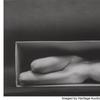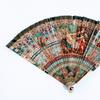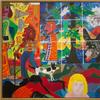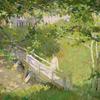McEntee's Masterpiece
- February 05, 2012 13:06
When Hudson River School artist Jervis McEntee’s wife Gertrude died in October 1878 at the age of 44 of an unknown illness, it left a gaping hole in his life.
They were married in 1854. Early on, they lived in an idyllic cottage on the McEntee family property overlooking the town of Rondout, New York (now Kingston).
From their windows they could see the Catskill Mountains to the north and the Hudson River to the east. While Jervis worked on his art, Gertrude planted rose bushes around the cottage, played the piano, and sang: "I dreamt that I dwelt in marble halls," "There you’ll remember me," "Last rose of summer."
When the war came, Jervis (Gertrude called him "Jervy") volunteered for duty. Gertrude’s wartime letters—now in the collection of the Smithsonian Archives of American Art—overflowed with adoration.
"I have read your last [letter] many times & at each reading, I thank God that he has given me such a dear husband to love and idolise—your daguerreotype has never left me, since you left—it is in my pocket all day, and at night I place it under my pillow with your letter. It is such a comfort to me, and I can go to sleep every night with your dear image in my mind."
Gertrude spent part of each winter with Jervis at the Tenth Street Studio Building in New York. She seems to have been a favorite of many of the artists there.
Fellow artist William Holbrook Beard, for example, thought that Gertrude had "the sunniest disposition of any one he ever met." According to McEntee, "[Beard] spoke of being here once and she came up and put her arms about me and kissed me while I had my palette and mahlstick in my hands, and of my expression of impatience and then my winking to him to show it was not very disagreeable."
At home in Rondout and living with McEntee’s family, Gertrude helped McEntee’s sister Sara and his aging mother with the endless housework drudgery.
When brother Maurice, an alcoholic, would drag himself home after a week-long binge, Gertrude would patiently nurse him back to health. "She bears it without complaining and tries in every way to lighten my anxieties," wrote McEntee.
Once when Gertrude was away visiting her parents in Boston, McEntee wrote, "It is astonishing how I miss her and how entirely dependent I am upon her society."
Adrift and despondent the winter after Gertrude died, Jervis turned to his easel.
On January 29, 1879, he painted what he hoped was "the suggestion of a solemn and impressive picture." McEntee wrote, "I…tried to put my stormy and sad thoughts into my work. I painted a brooding sky with gleaming lights along the far horizon, far reaching distances lost in mist and cloud and a foreground rocky and broken with the faded weeds and the olive and russets of the autumn grass."
The date was auspicious: "remembering it was my lost darlings birth day I took her letters from the cabinet and read them until I could see no longer, losing myself in a sweet communion with her."
Several days later he wrote of his new painting, "Am I not putting into it the storm that has swept across my soul? I do not know. I used to have Gertrude to tell me when my work was good. She knew better than I did and now I cannot tell."
Soon, other artists in the building took notice.
"[Richard] Hubbard and Homer Martin came in to see my picture. Hubbard said [Sanford] Gifford had told him about it. He said he spoke in great praise of it; that he had not heard him express himself so warmly in a long time. They both expressed themselves very unreservedly in admiration of it and Homer Martin said he thought it would mark a step in advance for me. He thought it my finest picture. Eastman [Johnson] yesterday commended it and told me Gifford had spoken in praise of it to him."
McEntee sent the painting to the annual spring exhibition of the National Academy of Design. It was his only submission. Not knowing where his painting would be hung, he visited the newly-installed exhibition on March 29th.
"…The first thing that caught my eye from the head of the stairs was my picture "Clouds" in the place of honor in the Academy, in the centre of the large South Gallery. There was a large gathering of artists… Many spoke most encouragingly to me of my picture as an exceptional work and fully meriting the best place on the walls. I was quite overcome by this spontaneous recognition and felt to the full the pleasure of a genuine success."
McEntee put a price of $2,500 on the painting, well above his usual range. As admired as it was, it did not sell. Perhaps some part of him did not want to let it go—indeed, years later, McEntee would write, "I had never cared to sell it…I painted it for myself."
In the 1880s, McEntee exhibited "Clouds" at the Pennsylvania Academy of the Fine Arts and the Corcoran Gallery. Otherwise, it remained in his studio.
After McEntee died in 1891, the painting was sold at auction. 120 years later, the location of "Clouds"—possibly his greatest work—is not immediately apparent. Presumably it exists in a private collection, its "gleaming lights along the far horizon" symbolic of a love lost long ago.
Sources:
Jervis McEntee papers, 1796, 1848-1905. Archives of American Art, Smithsonian Institution.
Bardin, Robert G., and J. Gray Sweeney. McEntee & Company. New York, NY: Beacon Hill Fine Art, 1997.
Vaux, Calvert. Villas and Cottages: A Series of Designs Prepared for Execution in the United States. New York: Harper & Brothers, 1857.





















